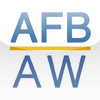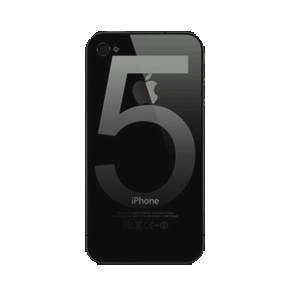 What has 44 legs, 22 iPhones and 16 cameras? A no-vision soccer match. The Pepsi Refresh Project teamed up with Åkestam Holst and Society 46 to create a system using sound and camera technology to allow players to navigate the field and each other, as well as locate the ball and the goal. Using the same Tracab tracking system that was used during the World Cup, information from 16 cameras is converted into a surround-sound landscape and sent to iPhones integrated into headgear on each player. The test match consisted of one team of sighted pro soccer players and one team of visually-impaired amateurs. Similar to beep baseball, every player wore occluders.
What has 44 legs, 22 iPhones and 16 cameras? A no-vision soccer match. The Pepsi Refresh Project teamed up with Åkestam Holst and Society 46 to create a system using sound and camera technology to allow players to navigate the field and each other, as well as locate the ball and the goal. Using the same Tracab tracking system that was used during the World Cup, information from 16 cameras is converted into a surround-sound landscape and sent to iPhones integrated into headgear on each player. The test match consisted of one team of sighted pro soccer players and one team of visually-impaired amateurs. Similar to beep baseball, every player wore occluders.
This video demonstrates the sounds the players used to navigate. The first sound, a warble, indicates the boundary line. The second sound, something quite like the Jaws theme, indicates proximity to an opposing player. A chiming sound is the ball. A whacking noise, like a drumstick on a rim, is the goal. The sounds increase in intensity and frequency as a player nears each specific item or another player.
There are five videos available at The Sound of Football, though unfortunately, none of them have video description. The first one, The Sound of Football Story, begins with an interview with one of the visually-impaired team members, 23-year-old Daniel Göransson. He speaks in Swedish and subtitles are shown on the screen. The subtitles read, “I lost most of my sight about 4-5 years ago. Before that I played a lot of football, and did pretty much everything that everyone else does. But recently I have not done much sports at all.” White letters on a black screen read, “We wanted to refresh blind football and help Daniel play again.” Ellen Sundh, Creative Technologist from Society 46, talks about the concept and how it came about while a montage shows Daniel and other players getting fitted with gear, computer screens with many lines of code, a technician setting up cameras, Daniel dribbling a soccer ball back and forth between his feet, and the sighted players passing a ball back forth amongst themselves. White letters on a black screen proclaim “Match Day.” Another short montage shows more camera preparation, connections being checked, players being outfitted and then finally, a player in a red jersey is given a final check and gives the camera a big smile and two thumbs up. A graphic shows a three-dimensional representation of how the system is supposed to work and then the teams are coming out onto the field.
The teams line up for the anthem and then take their places. Momentarily, red targets are shown under each player’s feet. All the players wear headsets with vision occluders and headphones. The pro team wears red, the amateurs wear blue. The whistle is blown and we have kick off. A redshirt searches for the ball and Daniel gets it and takes a shot, which is fielded. The red team shoots and misses. Daniel has the ball again and there is some physical contact as his team mates run interference. Daniel shoots and again the ball is fielded. The goalie pitches the ball back into play, Daniel and another blue player collide. Red team takes a shot and scores! The red team huddle up and bounce with joy. Now the blue team takes back control, moving the ball back down the field. Daniel takes a shot and it is fielded. He takes another shot, it bounces off the side of the goal, comes down right in the middle and Daniel comes in with a beautiful knee-sliding, leg-sweeping shot and powers the ball in past the keeper. GOOOOAAAALLL!!! A slow motion replay shows Daniel’s goal again.
The match ends in a one to one tie and a nice photo of both teams posed with the ref. Daniel is in front, holding up an iPhone. Daniel is interviewed again and he says, “With these sounds, it felt a bit like science fiction, actually.”
Per Fahlström, former professional goalkeeper, says, “It was fun, but very hard being a goalie without seeing. You simply have to trust other senses. Something one is not used to–listening.”
Daniel is shown reenacting his goal and he says, “It was fun-bloody-tastic! I will remember this for a long time. That’s for sure.”
The Pepsi Refresh Project is responsible for the funding of Sound of Football. In a quote from their follow up site, they make this claim: “In the future, we want to create new aides that enable visually impaired people to “see” with sound. We have thought about skiing, athletics or creating soundscapes in public places.”
Ellen Sundh of Society 46 said, “I think in the future this technology can be used in other arenas than in sports arenas, as people who can’t see can actually get information about the environment around them.”


Follow us on Twitter, Like us on Facebook